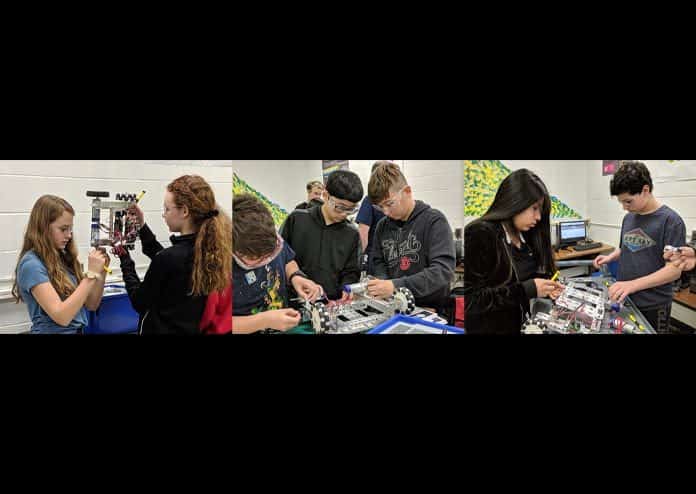
TOMS RIVER – The Office of Naval Research (ONR) has awarded Toms River Regional Schools with a second grant funding the district’s TR:TechReady initiative.
In 2018, Toms River Schools received the largest single competitive grant in its history from ONR, totaling over $760,000. This grant supported the TR:TechReady program, which is a computer coding initiative addressing district, industry, and naval goals.
Based on the program’s performance in year one, program leaders were awarded another grant for $256,482 for Year 2, starting May 1.
Since April 2018, ONR funding helped purchase devices and materials to make coding physical, programming devices and apps at the core of robots, drones, cell phones, and household appliances, according to the district.
“The district ran summer coding camps for 150 students and staff, and provided staff training and student field experiences and competitions during the year. It inspired new and revised high school courses with coding at their core,” stated a release from the district. “The ideas tested in TR:TechReady helped the district win a more focused grant from the NJ Department of Education to help meet the anticipated 2022 mandate that all students study computer science as a requirement for graduation, which also includes dual college credit and the chance to earn industry-valued credentials.”
TR:TechReady has helped to create a productive conversation around computer science in many ways throughout the state by promoting the idea that all students can code regardless of age, gender, ability, ethnicity, or means. TechReady also emphasizes that computer science is relevant across all content areas, bringing coding to Spanish, English, Earth Science, and other non-traditional CS subjects. Lastly, the program brings “coding beyond the keyboard” by applying code to physical devices and addressing real world problems.
The addition of grant funding to the district is extremely helpful, especially at a time when the state’s revised funding formula has cut state aid funding from many NJ school districts.
“What’s unusual about this program is that it assumes coding and computational thinking can be learned by and be of benefit to everyone, not just in STEM classes, but in every content area and career,” stated Assistant Superintendent Dr. Marc Natanagara, lead writer of the original application and its revisions.
The research team from Year 1 looked carefully at career trends, regional needs, and applications in students’ lives to develop relevant and authentic activities. One programming language is being used to decipher and analyze DNA sequences, one for peer teaching, and another to create virtual reality experiences.
In Year 2, the district plans to focus on more coding languages deemed to be important in industry. To strengthen its high school initiative, they will use some of the grant funds to establish “feeder” programs at the three intermediate schools, using successful models developed at the high schools in Year 1.
The expanded program will center on the concept of artificial intelligence (AI), which will help students focus on practical implementations of STEM and coding into areas like data analysis and visualization, human-tech interfaces, machine learning, and game theory, in applications as diverse as cybersecurity, energy, climate change, and internet of things (IoT).
Should year 2 be successful, the district plans to expand coding activities at the elementary level.







